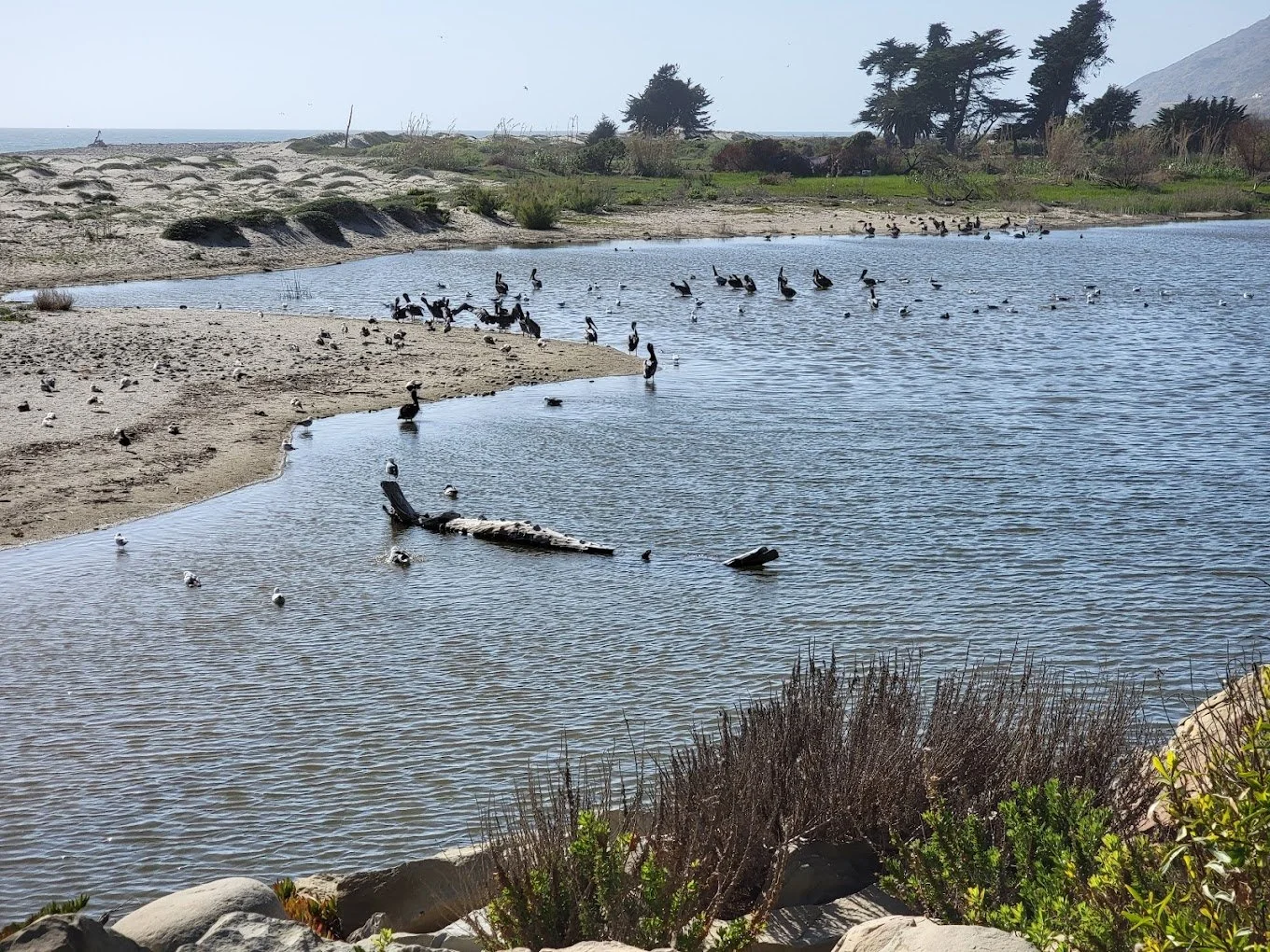Water is Life
It’s August and the intense summer heat and arid conditions have us thinking a lot about the life-sustaining and life-giving gift of water. Water is one of our most basic needs, which is why it’s so important to ensure that everyone, now and in the future, has access to it.
This month, we are exploring where our water comes from, how much water we actually use every day, and how we can be water wise in our home and garden.
explore your Watershed
To know where our water comes from, we must first get to know our local watershed. A watershed is a natural basin that holds rainwater flowing down from surrounding mountains, hills, rivers, and creeks.
Ventura River Estuary, photo by Ken Heller.
A watershed plays a vital role in slowing, spreading, and sinking rainwater into the ground, rivers, streams, ponds, and wetlands, before it continues its course to the ocean. Many species of life, including ourselves, depend on the health of our watershed.
You can find your watershed by going to the EPA’s How’s My Waterway? website and putting in your zip code. The site provides a map of your watershed as well as information on its overall health. Then you can look for local hikes that go through the creeks, rivers, and riparian areas in your watershed. Go out to explore and observe. See what kind of wildlife shares your watershed!
your water footprint
The water we depend on doesn’t only come from our local watershed. In fact, the water we use can come from all over the world. Much like a carbon footprint, a water footprint is a measurement of how much water it takes to make everything we eat, drink, and wear. For example, it can take 1800 gallons of water to produce just one pound of beef. This number comes from the water that is required to grow the grains the cow eats and the water that goes into the manufacturing and transportation of the beef from the farm to the store.
Let’s explore your water footprint on a normal day. Circle your choices below. Then add up the total gallons to see your water footprint.
Get Ready for School
Leave water on while brushing teeth = 9 gallons / Turn water off = 1 gallon
Clothes
Brand new cotton shirt = 650 gallons / T-shirt swap with friend = 0 gallons
New leather sneakers = 2040 gallons / Canvas hightops =650 gallons
Drinks
Water = 12 oz / Soda = 46 gallons
Lunch
Hamburger = 650 gallons / Veggie Sandwich = 60 gallons
Snack
Apple = 33 gallons / Chocolate bar = 450 gallons
After school
Watch a movie = 13 gallons / Go outside and play tag = 0 gallons
On the weekend
Get a ride to the mall and back = 15 gallons / Ride your bike to a friend’s house = 0 gallons
Make Your Own Soda
As we learned, a bottle of soda can take 46 gallons to make. That’s a lot of water considering how much liquid you actually get inside each bottle. But did you know that before mass manufacturing, many households make their own carbonated drinks using local or homegrown fruits? This simple recipe can give you a healthier, tastier fizzy drink AND reduce your water footprint and single use plastic.
Homemade strawberry soda.
To make soda, all you need is four ingredients: fruit, sugar, yeast, and water.
How do you find yeast? The waxy white coating on fruits like apples, plums, and grapes (called a “bloom”) is actually yeast! Yeast can be found on most fruit skins, even if you can’t see it. For example, tepache, a popular fizzy drink in Mexico, is made from fermented pineapple peels. When possible, choose organically grown, local fruit so that you can use unwashed fruit peels with the yeast still on them. Choosing local is also a great way to reduce your water footprint.
Fruit Soda Recipe:
Fill a clean quart jar with 1/2 cup fruit (chopped or just the peels) + 4 tablespoon sugar + water. Stir to dissolve sugar. Cover with a towel and secure with rubber band. Let this sit on the counter for 2-3 days until you see bubbles form at the top.
Strain the juice and transfer it to flip top glass bottles or clean plastic soda bottles (a great way to reuse bottles!). Leave about 2 inches of head space. Let this sit on the counter 1-2 more days.
Check the pressure on the bottles: squeeze the sides of the plastic bottle and if it feels hard with no give, it’s done. For flip tops, slowly open the lid. If you see lots of bubbles rising and hear a hissing sound, it’s ready. Close the bottles and put them in the fridge to stop the carbonation process. Once the bottles are cold, open and enjoy!
Grow Native Plants
Native plants are plants that have grown in a particular region or habitat for thousands of years. Because they have adapted to the region’s annual rainfall, soil condition, and weather, they tend to be more resilient and drought-tolerant.
Plants that are native to southern California include California black oak, Cleveland sage, California buckwheat, yarrow, and yerba buena. Including these plants in your landscaping and especially, to reduce or replace lawn, can help to save hundreds of gallons of water every year.
A Garden Lab student planting white sage.
As we learned from last month’s post on pollinators, native plants are also beneficial for our local wildlife. When you plant natives, you not only save water, but you’re also giving back to the ecosystem by providing food and shelter for other creatures.
Is your child passionate about water? Check out our Water is Life Zine for more water conservation activities and see how youth activists are standing up for the earth!
Follow us on @thehumannaturecenter throughout this month as we explore ways to be water wise!
Stay hydrated,
Ann



